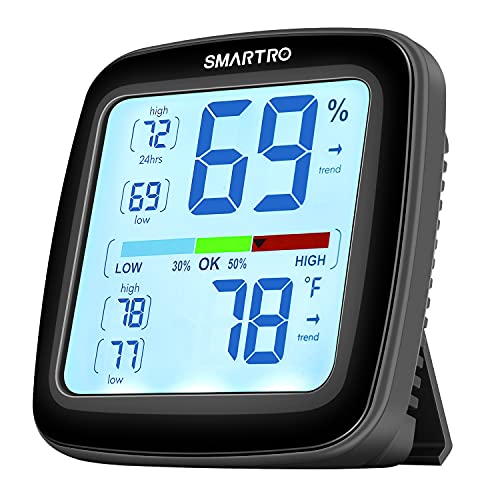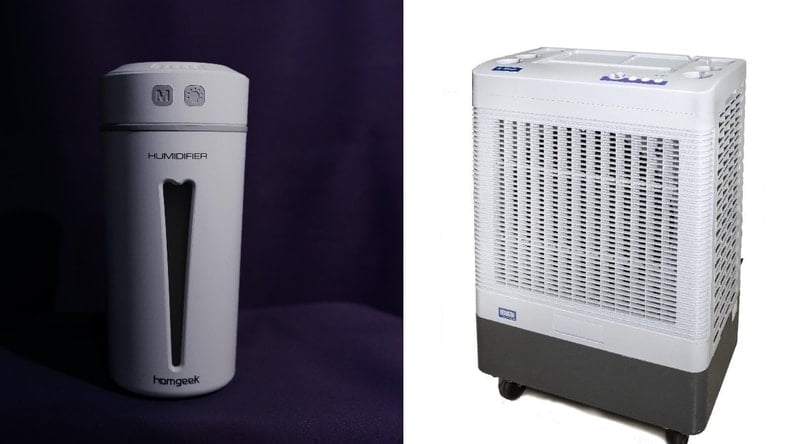Last Updated on January 2, 2024
Humidifier can help increase humidity in the environment of your home for your wellbeing and comfortability. However, it can be a real problem if water from it does not contribute to increasing humidity but gathers around it on the floor. Is there a way to keep humidifier from making your floor wet?
You can prevent getting your floor wet by using an accurately sized, fine mist and good quality humidifier that has suitably low mist output. Position it high enough and ensure proper air circulation to prevent water droplets from ending up on the floor.
Wet floor is bad in many ways. Firstly, you could slip on it and injure yourself. Consistent retention of water on wooden or carpeted floor could lead to mold and mildew that will slowly eat through it. That on the other hand can result in respiratory problems and allergies.

After a lot of research, thought and personal experience, I gathered a list of ways by which you can prevent your humidifier from making floor wet. Hope it helps…
1. Place Humidifier Sufficiently High
Mist produced by your humidifier is not in the form of vapors but very minute droplets. It needs some time to disperse in the air, convert to vapor and raise humidity in the zone.
If your humidifier is too close to floor, this mist will not get a chance to evaporate in air. As a result, it will drop on the ground around humidifier and make it wet.
A solution to this is to elevate your humidifier. This way mist coming out of it will have enough time to mix with air before it hits the ground. The higher you place your humidifier the better.
Generally, most manufacturers recommend placing humidifier at least 2 feet high from the floor. A night stand or table will do the job but you can get creative and use other ways to elevate unit too.
2. Waterproof Area Below Humidifier
Whether your humidifier is causing water on the floor due to leaking components, insufficient height or poor air circulation, all of these problems can be bypassed by using a cloth or mat below unit.
This way water will only affect what is placed below it.
You can get creative and use any cloth, mat, rug, towel, table cloth, shower curtain etc. below humidifier that keeps your floor from getting wet.
However, I would advise you to invest in a waterproof mat or a plastic tray.
I researched and found this nonslip waterproof mat to be adequate for this purpose. I thoroughly reviewed its details. It is specifically designed to protect flooring from food and water spillage by pets, but it is just the product you need.
Especially 0.6’’ edged boundary would be really helpful in preventing water from ending up on floor.
You can take a look at its specifications by clicking here.
Just remember to select appropriate size from given options based on your humidifier’s size and area around it that becomes wet.
Also consider this drip protector tray for this purpose. This specific package consists two of them with measurement 17″ X 13″ X 2. Click here to view more details.
3. Size Your Humidifier Accurately
A small sized humidifier will not be able to humidify the required space. On the other hand, if humidifier is too large for a room, it may cause excessive dampness and make surrounding area wet.
Actually, based on the size of humidifier, rate at which mist comes out of it varies. A larger humidifier will take much less time to expel same amount of moisture in the environment.
What I am concerned about is an overly sized humidifier, lacking a built-in humidistat, in a small sized room.
A humidifier with very high moisture output will cause relative humidity to go up much quicker. Without a built-in humidistat or repeated monitoring of humidity by a hygrometer, room will become very damp.
Consequently, due to high humidity, mist from humidifier will not thoroughly homogenize with air in the form of vapor. This will lead to water around unit on wooden, carpeted, or any other kind of floor you particularly have.
Manufacturers usually define area of the room in square feet that a humidifier will be able to humidify effectively. Use humidifier sized according to space of your room.
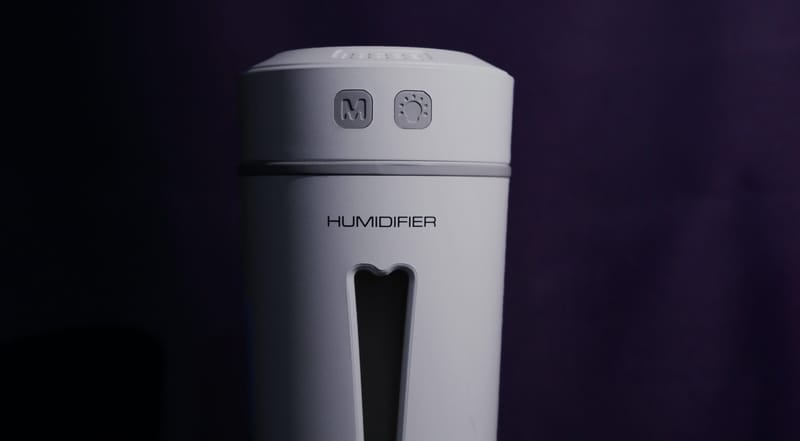
4. Select Appropriate Relative Humidity on Humidifier
Most experts recommend keeping relative humidity in your home from 30-50% for health and comfort.
It is preferable to keep it between 40% and 50%. However, you may keep it below 40% and stick to lower limit in winter to prevent condensation.
If you have chosen a value of relative humidity well above this prescribed range, it may be the reason for water on floor from humidifier, either by condensation, or inability of mist to mix with air due to very high relative humidity.
Thereby, select accurate humidity level in controls of your humidifier.
You may need to further adjust lower or higher. Especially, be careful in colder environment, as it is more prone to condensation.
Even if your humidifier does not have a humidistat, control mist output and monitor humidity someway, by hygrometer or at least by instinct and indicators like condensation, mold, mildew etc.
5. Ensure Proper Air Circulation in Your Home
Poor circulation of air in humidification space can also be the reason for mist dropping around humidifier and making the ground wet.
Actually, bad airflow in the room makes it difficult for mist to homogenize in atmosphere properly. This results in formation of high and low humidity zones in the room.
Generally, relative humidity in the area closely around humidifier is higher compared to other parts of the room.
Very high humidity around humidifier unit will inhibit conversion of mist to vapors. Consequently, these droplets will fall below on flooring or carpet.
Adequate Natural or Forced ventilation will not only prevent this from happening but also help regulate humidity levels in your home.
Circulating air through your home is not complicated to do so. It could be as simple as opening windows sufficiently to develop a fresh crossflow of air.
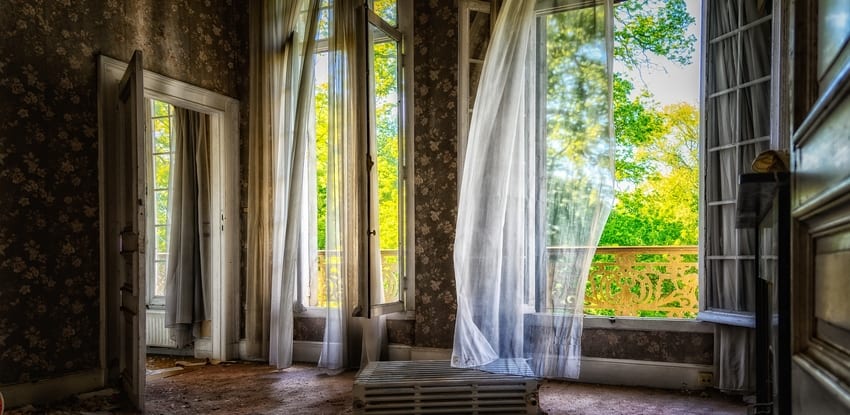
6. Turn Up the Heat in Your Living Space
One of the ways to prevent moisture from ending up on your floor and other parts of the room is adding heat to the space.
Actually, relative humidity and temperature are related.
Increasing temperature in your living space, using any kind of heating appliance, will automatically reduce relative humidity.
Thereby, heating your home will reduce chances of condensation in its relatively humid and cooler spots, as warmer air is less likely to condense. One of these spots is the area around humidifier.
This is especially true for humidifier with inferior quality or no humidistat.
Note: Heating will prevent condensation in the entire room. However, space close to humidifier is most humid, as it is concentrated by mist, and air is more likely to condense on flooring area close to it.
7. Repair or Replace Leaky Humidifier Components
Sometimes water on floor around humidifier has nothing to do with mist output, unit height or relative humidity.
It is as simple as a defective humidifier component leaking water on the flooring. Most common of possibilities in this regard is a leaking water reservoir.
Water container of humidifier is usually plastic. You can use a cheap and effective product like Water Weld Epoxy Putty Stick or a Rescue Tape to seal any cracks or gaps and prevent leaking.
However, for defective mist or steam generating components or electronic circuitry, I would advise you to just buy a new unit.
8. Prevent Placing Humidifier Near Dry Air Source
A humidifier with built-in humidistat is automatically able to regulate humidity levels in your living space.
When humidity sensor detects selected humidity, it cuts off humidification by itself, until required again. This automated humidity regulation is a relief until humidistat detects wrong value.
Placing your humidifier in path of airflow from an external source may cause error in its humidity measurement.
An example of such source of airflow would be from an air conditioner or a ventilation fan.
Solution is to either place your humidifier away from this air source or use a hygrometer.
A hygrometer at a spot in room where airflow is stable and homogenous will allow you to measure accurate relative humidity with time. You can then control humidifier operation based on hygrometer readings.
9. Use a Good Quality Humidifier
There are many ways an inferior quality humidifier could damage your floor by getting it wet all the time. Here are some common reasons for that:
- Humidifier does not automate operation based on humidity in the environment due to no humidistat.
- It does not produce a fine mist that can readily mix with air in the room.
- Unit spits and leaks water due to poor quality components and design problems.
- It detects inaccurate relative humidity due to low quality or incorrectly placed humidity sensors.
These are a few but recurring reasons why a substandard humidifier makes floor wet repeatedly.
All of these with others can be bypassed by selecting a quality humidifier. Spending just a little more can give you better value for money, longer life, better experience and prevention from damage to your home.
I actually selected one for you. Click here to find out more about it.
10. Select Suitably Low Mist Output
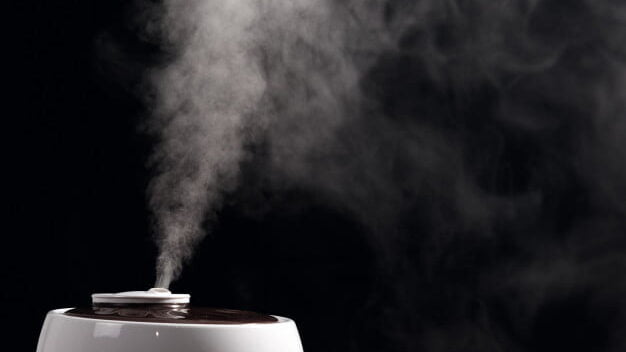
Higher humidifier mist rate means it will be able to achieve recommended relative humidity in your living space faster.
A higher mist output also implies that water from humidifier need to convert to vapor faster, to become part of air and improve humidity levels.
Consequently, depending mainly on relative humidity, if mist output exceeds certain threshold, moisture will not hold in air and drop on floor or carpet.
If I see water around humidifier (that is at least 2 feet above ground), I would slowly decrease its mist output, until mist is low enough to homogenously mix with air and prevent from falling below.
With adjustment of mist output, you can play with other variables like unit height and air circulation, if at a lower rate wetness is reduced but not eliminated.
11. Use Hygrometer or Humidifier with Humidistat
Even with a good quality humidifier that produces a fine mist and does not leak or spit water, water from it can end up on the floor nearby.
But how?
The answer: Lack of Automaticity
You see for humidifier with built-in humidistat, humidification is automatically regulated.
Humidistat periodically checks for relative humidity in atmosphere of your room. When humidity sensor detects higher humidity than recommended i.e., above 50%, it automatically stops humidifier from producing mist.
When humidity drops below recommended selected value, between 40-50%, it turns circuit responsible for producing mist back ON and humidification restarts.
On the other hand, in a humidifier that lacks humidistat, unmonitored and unautomated operation can cause humidity to go to dangerous levels that may lead to condensation.
Generally, condensation can happen at humidity well above 60%, especially in winters.
Relative humidity this high could also delay the time required for mist to mix properly with air in the form of vapors.
Both of these can lead to water in different spots and surfaces of your home including floor.
What to do if you have a manual humidifier?
Monitor humidity levels in the humidification space periodically. I would highly recommend using a hygrometer for this. It is cheap and helps you a lot in monitoring moisture levels.
When relative humidity in the room goes above recommended value or close to it, either turn OFF humidifier or lower mist rate to maintain humidity levels.
Taking several factors into consideration, including accuracy, quality and value for money, I selected a hygrometer for you.
The reason I recommend SMARTRO SC42 Professional Digital Hygrometer is because of its high accuracy Swiss humidity sensors with tolerance of ±2%RH, which is pretty great for this price.
It can be manually calibrated and certified by Aerospace Institute for Metrology and Measurement Technology.


